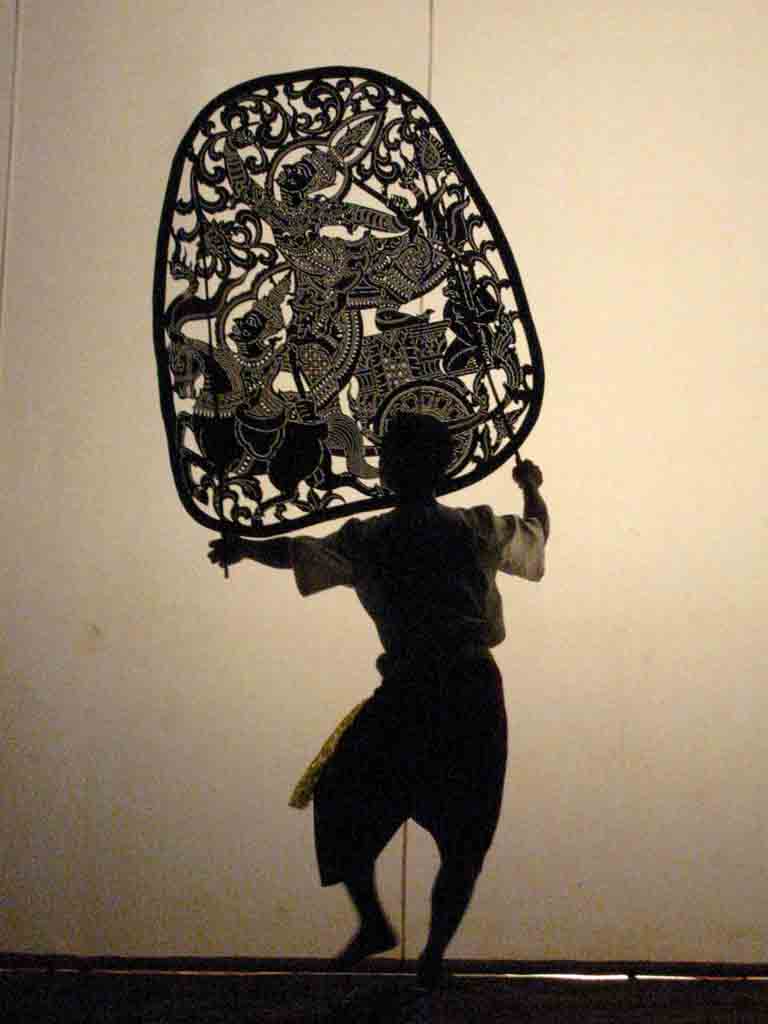More than 2,000 years ago, in 121 BC, Emperor Wu of China’s Han dynasty was devastated by the untimely death of one of his favourite concubines. ‘The sound of her silk skirt has stopped,’ the emperor, an accomplished poet, wrote of Li Fu-ren. ‘On the marble pavement dust grows. Her empty room is cold and still. Fallen leaves are piled against the doors. How can I bring my aching heart to rest?’
Grief-stricken, the emperor implored court officials to bring his lover back to life. Legend has it that, inspired by the lively shadows cast by children playing with dolls inside the court, one of Wu’s aides crafted a perfect replica of the concubine out of leather. Holding the figure in front of an oil lamp, he gently manipulated its limbs to make it ‘dance’. The emperor was delighted – and shadow puppetry was born.
Sweeping the continent, shadow theatre soon reached the shores of Southeast Asia. In Cambodia, a pre-Angkorian stone carving describes a kutakkta – a female puppeteer – performing in a religious ceremony for Svarasvati, the god of art and eloquence. In Indonesia, where it is known as wayang kulit (‘shadow skin’), this ancient art form is believed to possess great spiritual power. Carrier of myth, morality play and religious experience rolled into one, each performance tells traditional tales embellished with tidbits of village gossip. With the introduction of television and cinema in the 20th century, Asian shadow puppetry was dealt a near-fatal blow, but recent evidence suggests that what was once considered a dying art is now experiencing resurgence as more and more people strive to preserve cultural practices within the region.
Born in Cambodia’s Takeo province in 1961, Shadow Puppeteer Master Mann Kosal is one such individual. A graduate of the Bassac Theatre at Phnom Penh’s Royal University of Fine Arts, Kosal has been pivotal in reviving the traditional Khmer repertory, production and performance that was almost lost under the Khmer Rouge. Between 1991 and 1997, he promoted shadow puppet theatre within the Ministry of Culture and Fine Arts and today is artistic director of Sovanna Phum (‘Golden Era’), an independent art association that is home to more than 120 of the country’s most promising performance artists. “Shadow puppetry is powerful and mysterious in its immateriality, capturing the imagination of people for thousands of years,” he says. “Even within the structured storylines, every performance leaves room for improvisation. This allows the art form to remain a relevant, living part of the culture of the time, able to respond to the contemporary needs of the population.”
Known as sbaek in Khmer, the puppets are chiselled by hand out of tanned cow hide using traditional methods. The plays are performed both as homage to Buddha, the Hindu gods, and the ancestral spirits they depict, and as a vehicle for communication with them – the point being to elevate both the performers and the audience to “a higher level”. Rousing drum beats from the Pin Peat Orchestra lend each play a distinctly tribal feel, from the percussive rumana to the thunder of the giant barrel-shaped skor thom.
WHO: Sovanna Phum
WHAT: Shadow puppets
WHERE: Sovanna Phum Theatre, #166 St. 99 (nr St. 484)
WHEN: 7:30pm June 29 & 30
WHY: Golden-era Khmer entertainment
